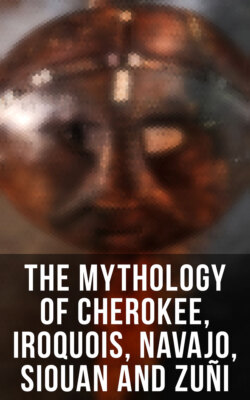Читать книгу The Mythology of Cherokee, Iroquois, Navajo, Siouan and Zuñi - James Mooney - Страница 29
На сайте Литреса книга снята с продажи.
The Tomb of the Black Tortoise
ОглавлениеA more detailed description of one of these groups of sepulchral mounds may furnish the reader with a clearer idea of the structures as a whole. The group in question was discovered in Minnesota, on the northern bank of St. Peter's River, about sixty miles from its junction with the Mississippi. It includes twenty-six mounds, placed at regular distances from each other, and forming together a large rectangle. The central mound represents a turtle forty feet long by twenty-seven feet wide and twelve feet high. It is almost entirely constructed of yellow clay, which is not found in the district, and therefore must have been brought from a distance. Two mounds of red earth of triangular form flank it north and south, and each of these is twenty-seven feet long by about six feet wide at one end, the opposite end tapering off until it scarcely rises above the level of the soil. At each corner rises a circular mound twelve feet high by twenty-five feet in diameter. East and west of the structure stand two elongated mounds sixty feet long, with a diameter of twelve feet. Two smaller mounds on the right and left of the turtle-shaped mound are each twelve feet long by four feet high, and consist of white sand mixed with numerous fragments of mica, covered with a layer of clay and a second one of vegetable mould. Lastly, thirteen smaller mounds fill in the intervals in the group.
Conant gives an explanation of the whole group as follows: "The principal tomb would be the last home of a great chief, the Black Tortoise. The four mounds which form the corners of the quadrangle were also erected as a sign of the mourning of the tribe. The secondary mounds are the tombs of other chiefs, and the little mounds erected in the north and south corresponded with the number of bodies which had been deposited in them. The two pointed mounds indicate that the Black Tortoise was the last of his race, and the two large mounds the importance of that race and the dignity which had belonged to it. Lastly, the two mounds to the right and left of the royal tomb mark the burial-places of the prophets or soothsayers, who even to our own day play a great part among the Indian tribes. The fragments of mica found in their tombs would indicate their rank."6
